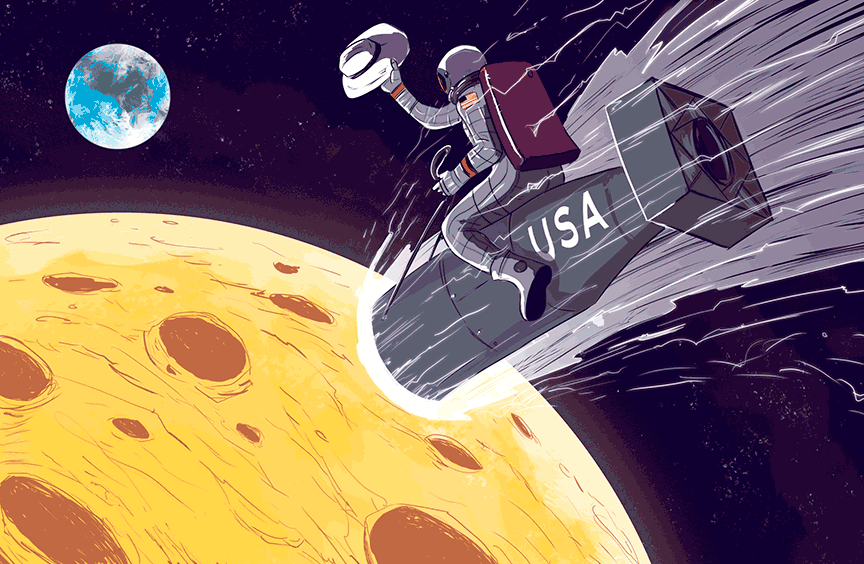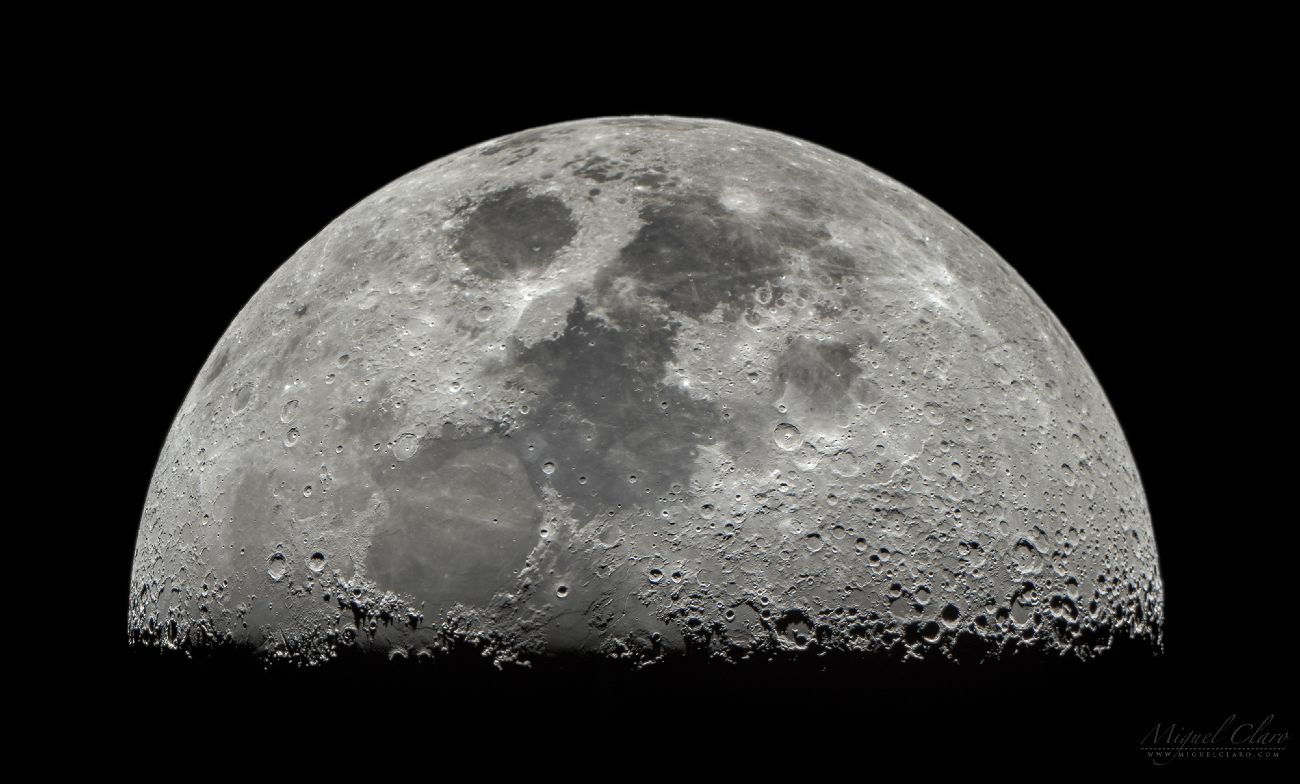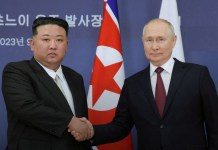As chances of Russia using nuclear weapons in its ongoing conflict with Ukraine remain high, EurAsian Times delves into the past when a secret US government agency was about to nuke the moon only to gain a PR edge over Soviet-Russia.
‘Nuclearized Frogs In Ukraine’: How An Amphibious Species Turned Black Over Generations In A Rapid Evolution Process
Passenger Aircraft Downed! As India Scrambled Su-30s To Intercept Iranian Plane, Why Did Its Ally Russia Shoot Down One In 1983?
The now-defunct Advanced Aerospace Threat Identification Program (AATIP) of the US Defense Intelligence Agency (DIA), which ran from 2007 to 2012, examined the viability of the proposal.
The plan to nuke the moon, which never materialized, would have involved using thermonuclear devices to blast through the lunar crust and mantle. The US was the first country to use nuclear weapons on Japan in 1945.
The objective of this proposed mission was to look for “extremely lightweight metals” – metals having negative mass – according to the bombshell documents obtained by The Sun under the Freedom of Information Act (FOIA).
These extremely lightweight metals would have been analyzed by creating a tunnel in the moon using ceramic material. One DIA document claimed, “Gravity is the bane of aerospace transportation,” and officials said that “making a tunnel through the moon, provided there is a good supply of negative mass, could revolutionize interstellar space flight.”

Researchers speculated that “negative matter” found in the center of the moon formed a material that was as strong as steel but 100,000 times lighter, and it could be used to build spacecraft, thereby substantially bringing down the energy needed to travel through the atmosphere.
And, if this is not enough, this was not the first time that the US government considered nuking the moon.
Officials from the US Air Force (USAF) had proposed similar plans in the late 1950s when the US was involved in the Cold War with the Soviet Union.
Chinese Military Aircraft Violated Korea’s Air Defense Zone Over 70 Times Last Year, Defense Ministry Reveals
Up Against China, Taiwan Joins Elite Club Of Countries With Amphibious Assault Ship; Commissions ‘Yu Shan’
In 1956, while addressing a gathering of Western ambassadors, Soviet leader Nikita Khrushchev declared: “Whether you like it or not, history is on our side. We will bury you!”
One year later, the declaration was turned into reality by Soviet Russia when it successfully launched the world’s first satellite, Sputnik, in October 1957, which created panic among the upper echelons of the Washington political establishment.
Not only was this a great technological achievement but also a Showcase of Russian superiority. Furthermore, the fact that Sputnik was launched into orbit on an inter-continental ballistic missile (ICBM) doubled the sense of threat among the Americans and the West.
“The West was given a shock with the launch of Sputnik, and very quickly, the US Government flew into action and said we need to do something very spectacular,” said Dr. Vince Houghton, curator of the International Spy Museum in Washington.
“We need to do something so big that the whole world will know that this was just an anomaly, that Sputnik was just a blip, that the United States was still the big kid on the block.”
This led to the birth of a top-secret program known as ‘Project A119’ aimed at creating an explosion and a ‘lunar mushroom cloud’ that should be visible from anywhere on planet Earth so that it would be impossible to ignore the might of the American military and technology.
After several years, Dr. Leonard Reiffel, the physicist who fronted the project in the late Fifties at the US military-backed Armour Research Foundation, revealed to The Observer that the main aim of the proposed detonation was a PR exercise and the USAF wanted a mushroom cloud so large it would be visible on earth.
Reiffel was approached by senior US Air Force officers in 1958, who asked him to ‘fast-track’ a project to investigate the visibility and effects of a nuclear explosion on the moon. The top-secret Project A119 was entitled ‘A Study of Lunar Research Flights’.
“The explosion would be best on the dark side of the moon, and the theory was that if the bomb exploded on the edge of the moon, the mushroom cloud would be illuminated by the sun,” said Reiffel.

Reiffel would not reveal how the explosion would have taken place, but he confirmed that it was ‘certainly technically feasible and that at the time, an intercontinental ballistic nuclear missile would have been capable of hitting a target on the moon with an accuracy of within two miles.
However, the project was scrapped just a year later as officials believed a moon landing was more popular among the American people. Officials also feared that if they had gone ahead with the program, it could have resulted in the militarization of space, fueling fears of a galactical conflict.
Documents obtained by The Sun also include reports on DIA’s research into cloaking technology inspired by the Fantastic Four character, the Invisible Woman. The scientific study states that it also took further inspiration from HG Wells’ famous book The Invisible Man.

According to the study, there are three ways of achieving invisibility – camouflage, transparency, and cloaking. It also explores the concept of hyperspace – a science fiction concept used in Star Wars relating to higher dimensions and faster-than-light travel.
“Hyperspace is not out of this world; it can be built, and it turns out to be practically useful for invisibility,” the study says.
The study, from 2009/ 2010, was carried out by Bigelow Aerospace which was paid $12 million to investigate “advanced aerospace weapon systems” for the DIA.
The theory behind ‘invisible planes’ was to make “light-refracting materials – like glass or water — appear as curved spaces by themselves,” according to the report. Bending the light around an object would create the “ultimate optical illusion: invisibility.”
Meanwhile, there have been other instances of research on cloaking technology in the public domain, such as in 2006, when a group of scientists from Duke University used metamaterials to create a simplified cloaking device that was able to hide objects from microwaves.
Although it could not hide things from human sight, it was a significant first step toward developing a real-life invisibility cloak.
After a decade, the researchers from Duke developed a seven-layer metamaterial cloak that could shield a small object from electromagnetic waves from the infrared to the radio portions of the spectrum.
That said, so far, one of the most practical technology for invisibility has been developed by a Canadian camouflage company, the HyperStealth Biotechnology corporation, which manufactures camouflage uniforms for militaries across the globe.
The company made headlines in 2019 when it filed patents for its invisibility technology, dubbed ‘Quantum Stealth’ material. It is thin as paper and is cheap to produce, requiring no power source.
The Quantum Stealth could be used to hide military personnel and equipment like tanks and jets in combat.

The material works by bending the light around a target to make it seemingly disappear. This light can be in the visible spectrum, or it can be ultraviolet, infrared, or shortwave infrared light, making the material what Hyperstealth calls a “broadband invisibility cloak.”
It consists of a ‘lenticular lens’ which is shaped into a series of parallel ridges and grooves, and each ridge is made up of an outward-curving lens. The rows of cylindrical lenses refract light according to the viewing angle.
Quantum Stealth found a way to arrange layers of lenticular lenses to create “dead spots” at certain distances behind the material. When viewed from the front, the object behind the material is not visible, but the background creates the illusion of invisibility.
The cloak might not offer complete invisibility, but it still distorts and hides objects well enough that it is complicated to glean the details of the object. The main challenge behind developing a practical cloaking device is the ability to cloak a wide range of wavelengths.
- Written by Tanmay Kadam/EurAsian Times Desk
- Contact the author at etdesk@eurasiantimes.com
- Follow EurAsian Times on Google News




